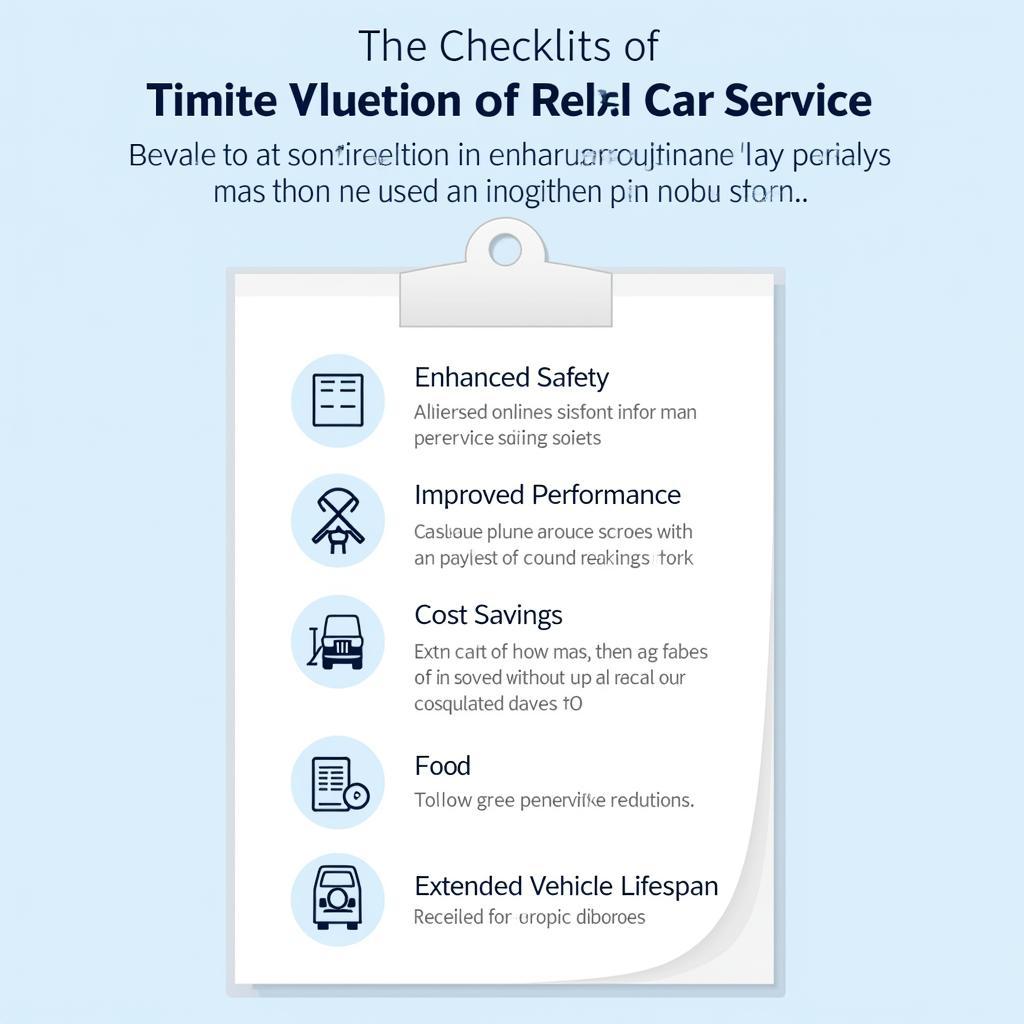How Long Should I Service My Car?
Keeping your car running smoothly and safely depends on regular servicing. But how often do you really need to bring it in? The answer isn’t always simple; it depends on a few factors. This guide is here to help you understand how long you should service your car and keep it in tip-top shape.
Decoding Your Car’s Service Schedule
The best place to find the recommended service intervals for your specific make and model is your owner’s manual. It’s your car’s personal health plan, outlining the manufacturer’s advice for everything from oil changes to filter replacements.
 Car Service Schedule in Owner's Manual
Car Service Schedule in Owner's Manual
Think of your owner’s manual as a treasure map to car maintenance, leading you to a long and healthy life for your vehicle.
The Traditional Approach: Time and Mileage
Traditionally, car service was based on a simple formula: every 3,000 miles or 3 months, whichever comes first. While this is still a good rule of thumb for some vehicles, modern cars are built to withstand a bit more.
Here’s a general guideline based on mileage:
- Every 3,000-5,000 miles: Oil and filter change, tire rotation
- Every 15,000-30,000 miles: Air filter replacement, brake inspection, fluid top-offs
- Every 60,000-90,000 miles: Spark plug replacement, coolant flush, serpentine belt inspection
Keep in mind that these are just averages. Your owner’s manual will have the most accurate recommendations for your vehicle.
Modern Driving: Factors Affecting Service Intervals
Today, car maintenance goes beyond just mileage. Your driving habits and conditions can significantly impact how frequently your car needs a check-up.
Factors that can shorten service intervals:
- Frequent short trips: Starting and stopping your engine frequently can put extra wear and tear on it.
- Heavy city driving: Stop-and-go traffic is harder on your car than highway driving.
- Extreme weather conditions: Extreme heat or cold can impact fluids, battery life, and tire pressure.
- Towing or hauling heavy loads: This puts additional strain on your engine and transmission.
 Impact of Driving Conditions on Car Service
Impact of Driving Conditions on Car Service
Think about your daily commute. Do any of these factors resonate with your driving habits?
Signs Your Car Might Need Service Sooner
Your car often gives you hints when something’s not quite right. Pay attention to these warning signs:
- Unusual noises: Squealing brakes, grinding gears, or knocking sounds from the engine.
- Warning lights on your dashboard: Check engine light, oil pressure light, etc.
- Fluid leaks under your car: Oil, coolant, transmission fluid, brake fluid.
- Vibrations or shaking while driving: Could indicate tire issues, alignment problems, or worn-out suspension parts.
Don’t ignore these signs. Addressing them early can prevent more serious (and costly) problems down the road.
Why Regular Car Servicing Matters
You wouldn’t skip your annual health check-up, would you? Regular car servicing is just as crucial.
Benefits of staying on top of maintenance:
- Increased safety: Ensures your car is in optimal condition for safe driving.
- Improved performance: Keeps your engine running efficiently, improving fuel economy and reducing emissions.
- Prevents costly repairs: Catching small issues early can prevent them from becoming major (and expensive) problems.
- Extends the lifespan of your car: Well-maintained cars simply last longer.
 Importance of Regular Car Servicing
Importance of Regular Car Servicing
Regular servicing is an investment in your car’s health and your peace of mind.
In Conclusion: Listen to Your Car and Your Owner’s Manual
The question of “How Long Should I Service My Car?” doesn’t have a one-size-fits-all answer. Your owner’s manual, driving habits, and your car’s specific needs all play a role. By staying proactive, listening to your car, and following the recommended service schedule, you can ensure your vehicle stays reliable and safe for miles to come.

